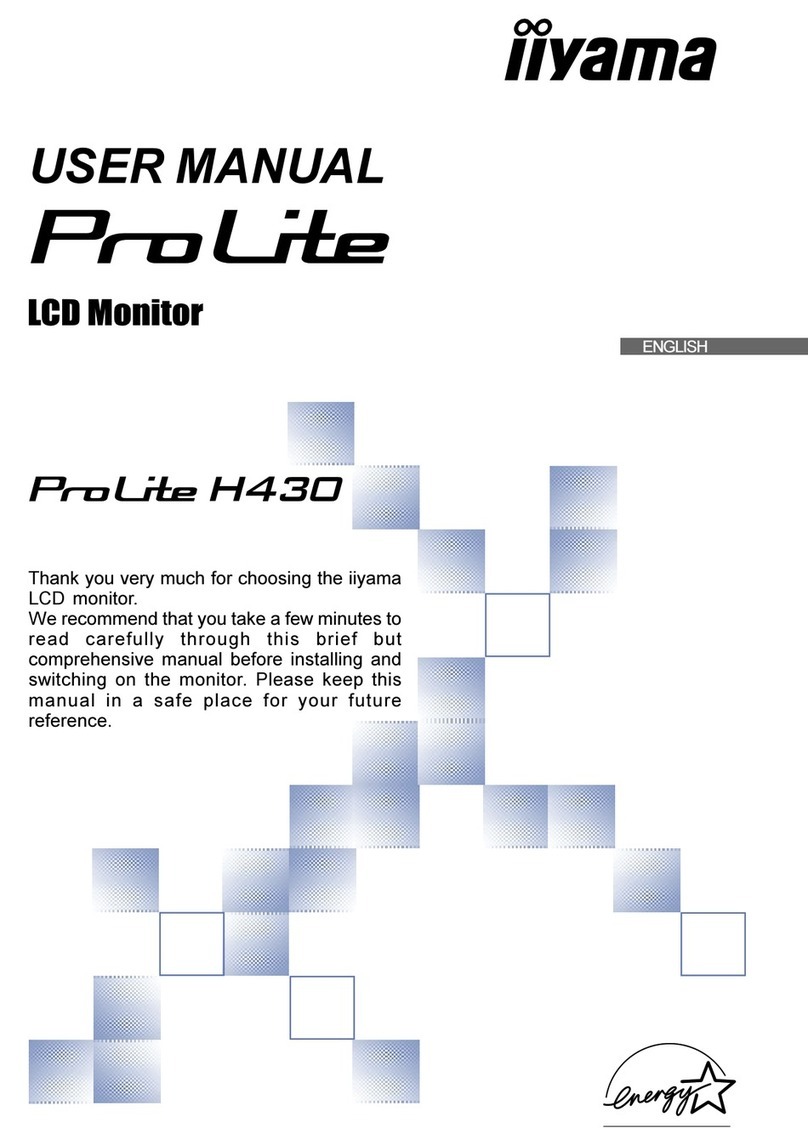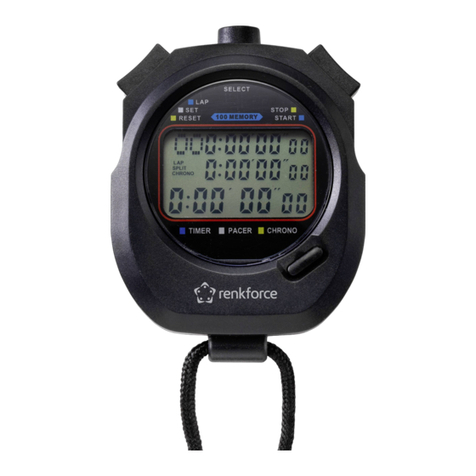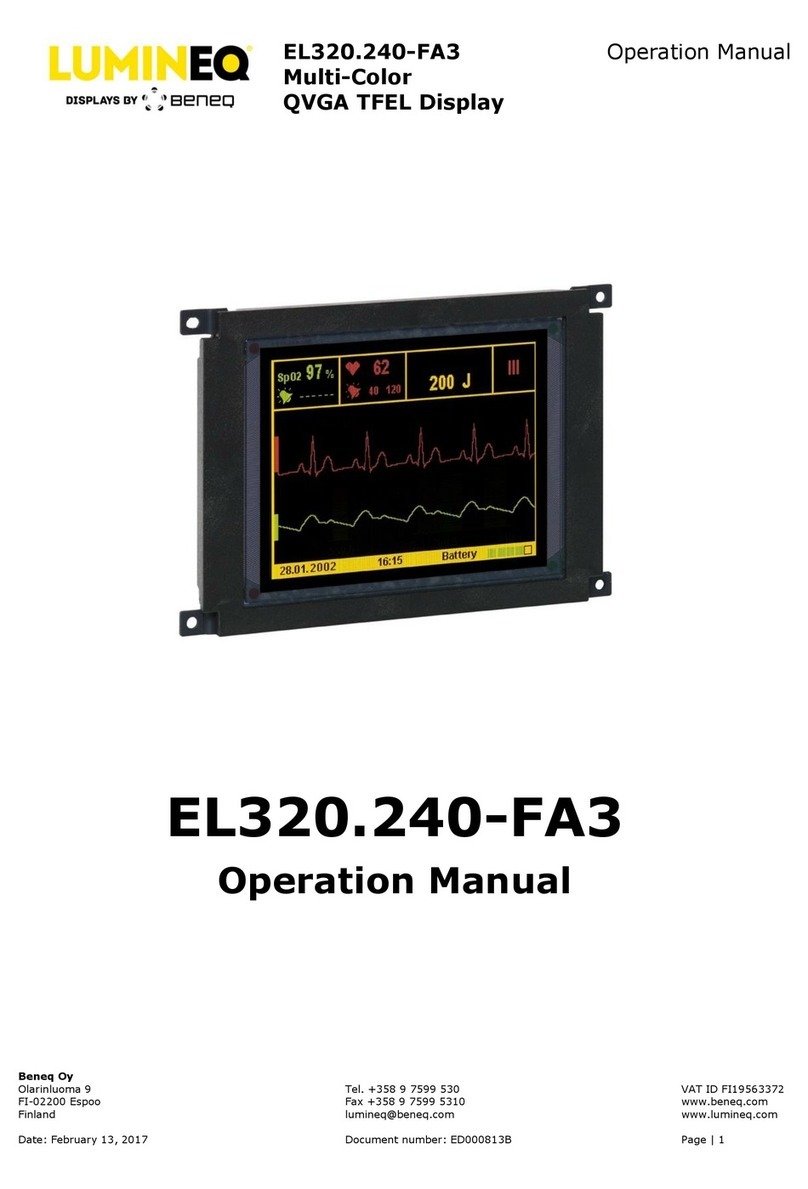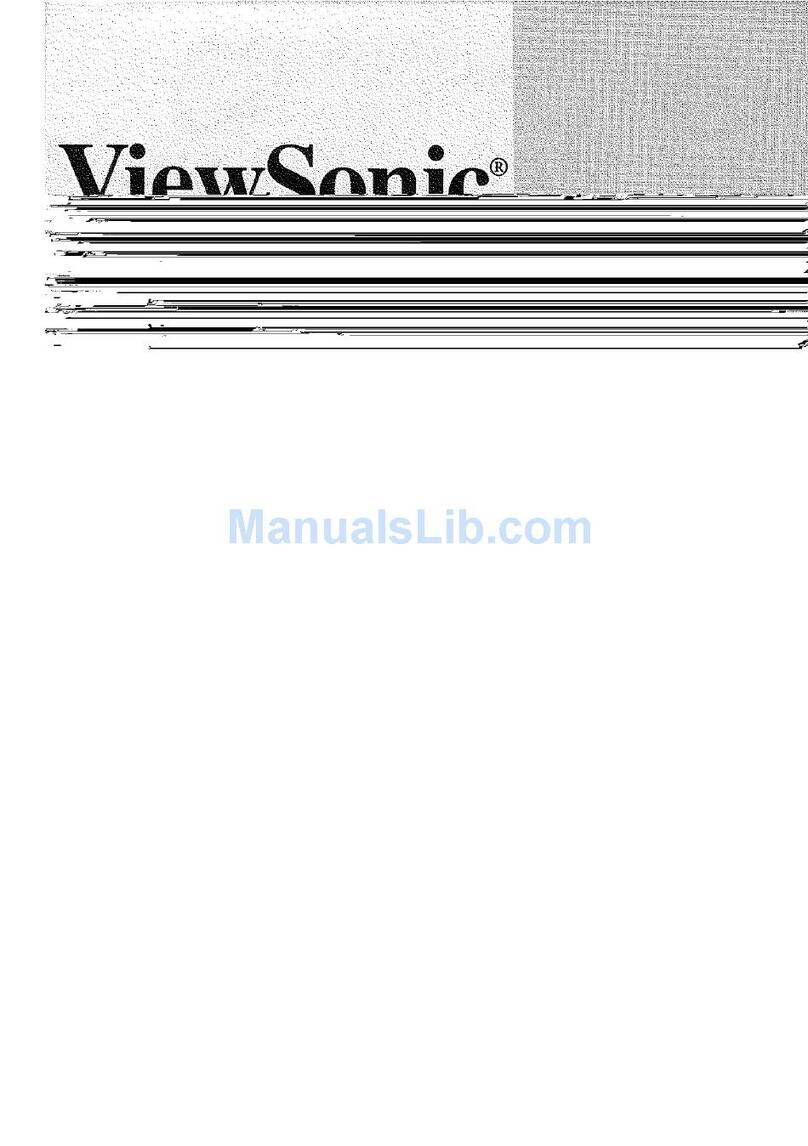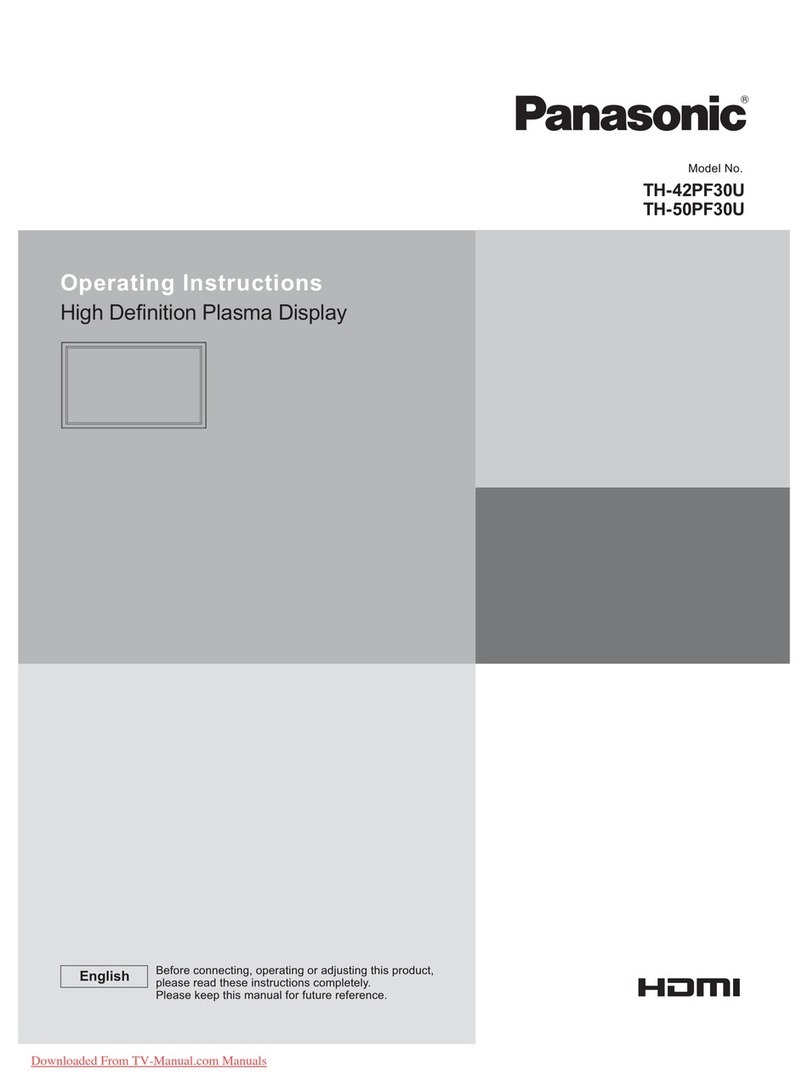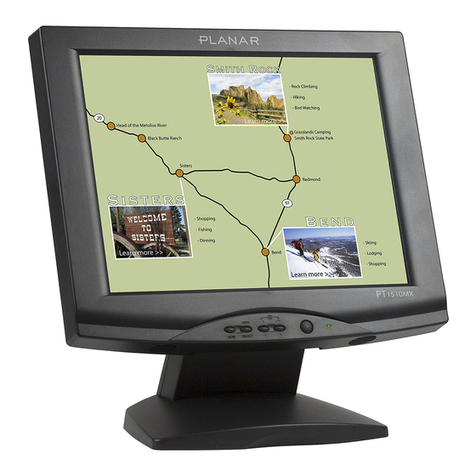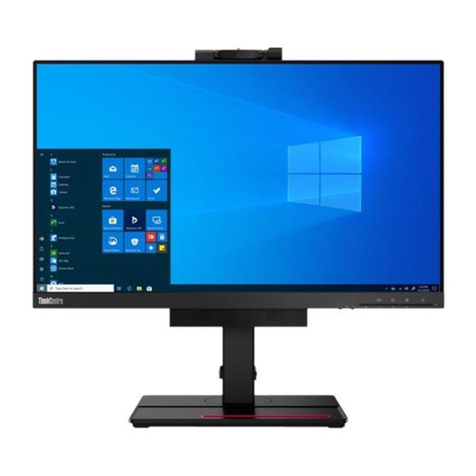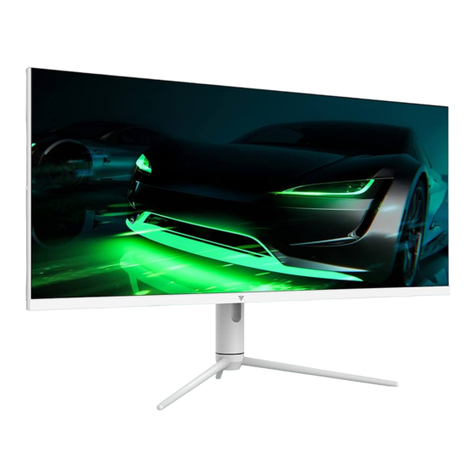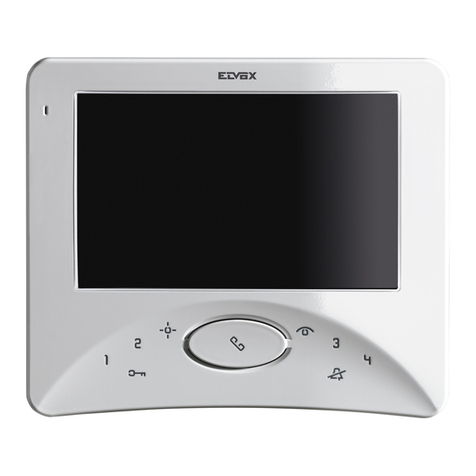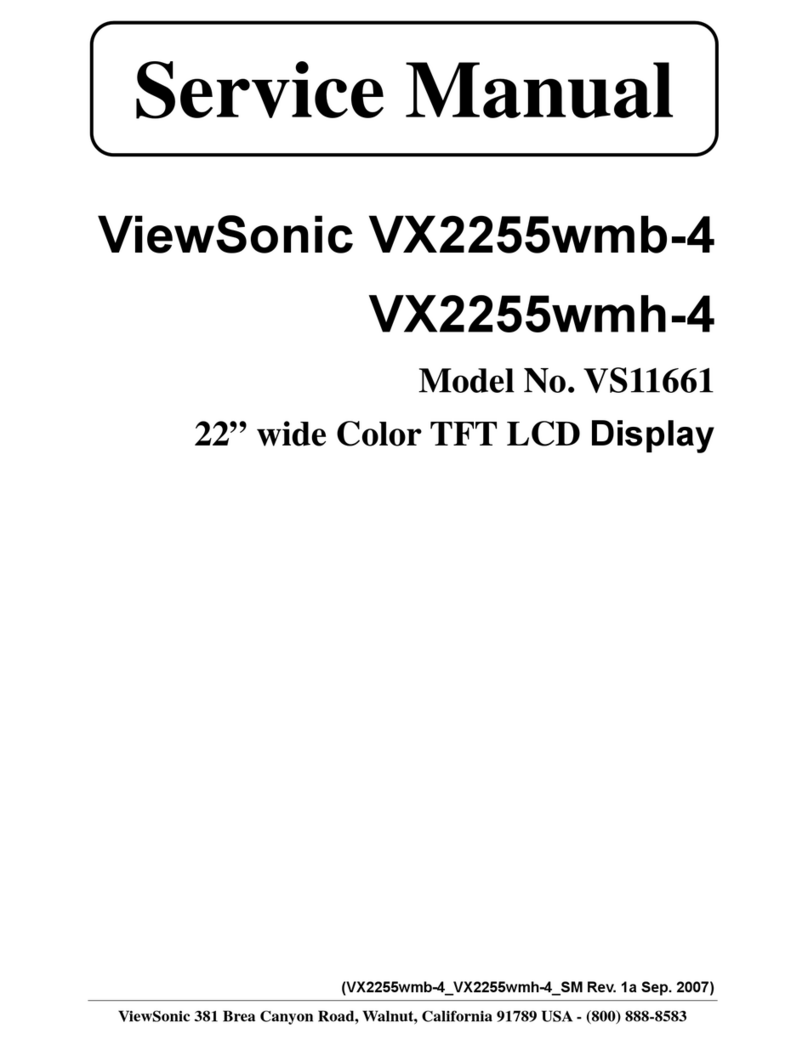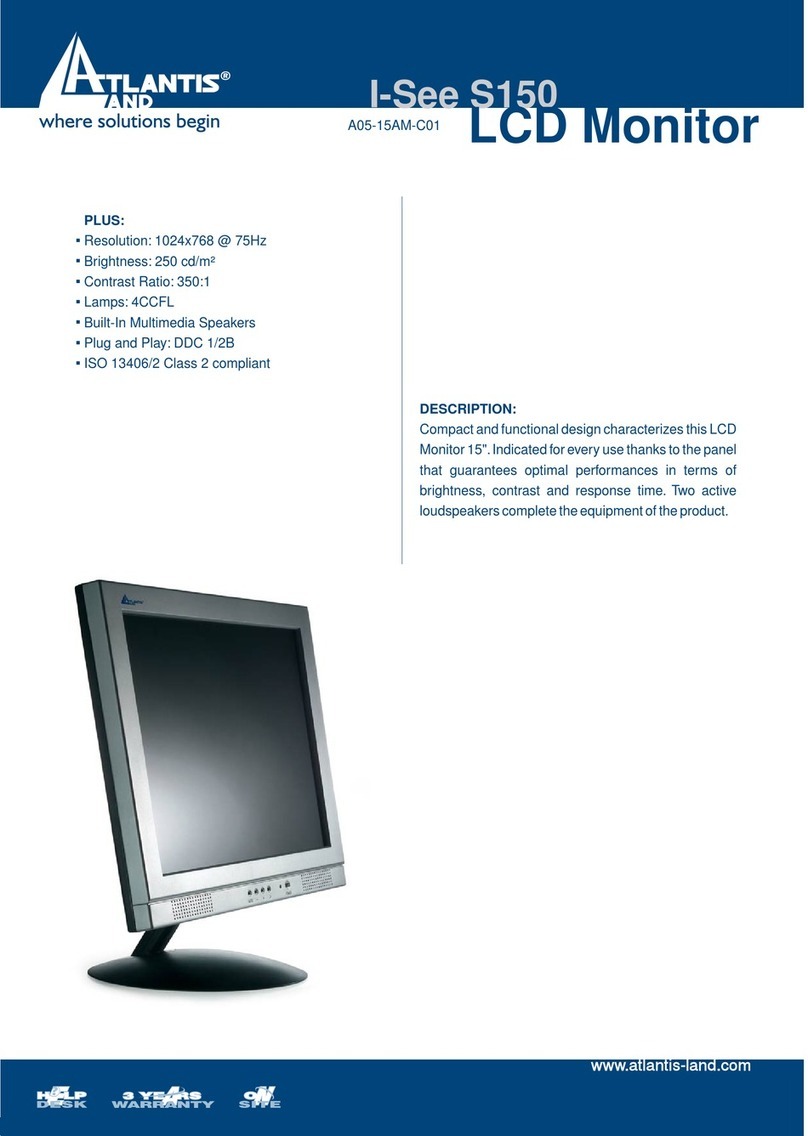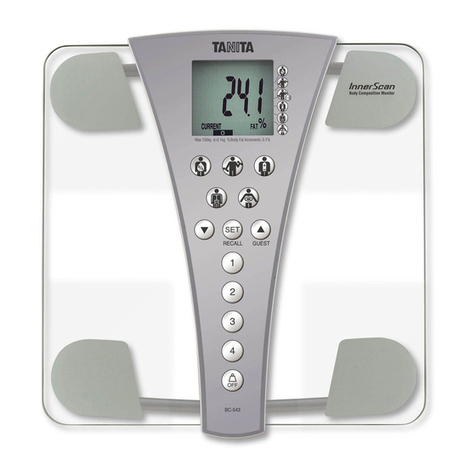Thermosense TS100 User manual

Page 1
TS100(48mm*48mm)
TS700 (72mm*72mm)
TS900 (96mm*96mm)
72
72
67.2 67.2
68.4
7
48 68.4
7
44.6
44.6
48
96
91.2
48
44.6
68.4
7
96
91.2 91.2
96 68.4
7
TS100
1
2
7
17
18
1016
15
14
OP1
OP2
INP2
RS-485
A+ B
mA
VTC
A
B
B-
+5V
AUX-
AUX+
AL1
AL2
85~265V*
85~265V*
AC
L
N
13
12
11
9
8
6
5
4
3
TS700
B
B
mA
mA
V
V
TC
TC
A
A
B
B
TS400/TS900/TS500
TRS
OP1
OP2
RS-485
A+
B-
AL1
AL2
AC
L
N
17
18
16
15
14
13
23
24
22
21
20
19
7
10
12
11
9
8
1
2
6
5
4
3
TRS
TRS TRS
GND-
GND-
AUX-
AUX-
AUX+
AUX+
OP1
OP2
INP2+
INP2+
INP3+
RS-485
A+
B-
AL1
AL2
AU3
AU3
AC
L
N
11
12
10
17
18
16
15
14
13
7
9
8
1
2
6
5
4
3
LCD display advanced digital temperature controller
User Manual
Please read this manual carefully and keep for future reference
Features
Ambient temp 0-50°C, humidity 0-80%RH
Communication: RS-485, modbus-RTU, pattern 8-(N,O,E)-(1,2)
Special features: all parameters distributed in three levels, parameters can be manually
designated to different levels
Add-on feature: auto/manual control, run/stop function, even SV input
Program version: PID mode, ramp up mode, temp constant mode, soft-start
Control mode: PID with auto-tuning, on/off, heating or cooling, heating+cooling, 3 wires
proportional valve control, valve control with feedback signal, output restrain
Alarm: AL1/AL2 relay output, excitation, non-excitation, delay output, alarm lock function
Alarm mode: PV, deviation, absolute, band, alarm standby, PV deviation alarm ramp start-up
alarm, ramp end alarm, Loop break alarm, heater break alarm
Output: relay, SSR drive, analog, triac, re-transmission
0.2% measuring accuracy, maximum resolution 0.1 for TC and RTD input
LCD three color VA display, bar graphic, output percentage MV1/MV2 or feedback MVFb display
1: Model number and ordering information
Please check this information and specify the code when ordering with us
Model Item number (Panel size: width x height)
2. Size and mounting
TS100 TS400
TS500
TS700
Unit:mm
Unit:mm
Unit:mm
TS900
Unit:mm
3. Wiring diagram
Main output Relay
250Vac 5A (resistive load)
Alarm Relay
250Vac 3A (resistive load)
4-20mA output
(maximum load resistance 500 ohm)
12VDC pulse output
(20mA)
1: Controller type
RRamp and soak mode (with timer)
UStandard PID type
D4-20mA output
VSSR Drive/Voltage pulse output
RRelay output
E0-10Vdc
F0-20mA
5: Power Source
96 85~265Vac 50/60HZ
4: Number of Alarms
11 alarm
22 alarms
24 24Vac/24Vdc
2: OUTPUT 1
50-5Vdc
71-5Vdc
TTriac single phase zero-crossing trigger
ARelay output, for motor valve direct act control
D4-20mA output
VSSR Drive/Voltage pulse output
RRelay output
E0-10Vdc
F0-20mA
3: OUTPUT2 (output 2 is only available for heating + cooling controller)
50-5Vdc
71-5Vdc
TTriac single phase zero-crossing trigger
ARelay output, for motor valve reverse act control
NNo output2 (for single output controller, choose code N)
33 alarms
XMotor valve direct/reverse control version (two relays)
TTemperature constant mode (with timer)
6: PV/SV re-transmission
N
A
B
E
No re-transmission function
4-20mA re-transmission via OP2
0-20mA re-transmission via OP2
0-10Vdc re-transmission via OP2
4-20mA re-transmission via AU3
0-20mA re-transmission via AU3
0-10Vdc re-transmission via AU3
F
G
K
7: RS-485 Communication
8: AUX power source
9: Position feedback (analog feedback input from INP2)
10: Remote SV setting
11: Manual output% remote setting
TS400 (48mm*96mm) Vertical
TS500 (96mm*48mm) Horizontal
Note: Above is a general wiring diagram, please always refer to the
connection diagram on the side of the controller.
INP2/INP3 used for remote SV, or position feedback or remote output% under
manual mode. Please refer to wiring diagram on the unit for single phase or
three phase triac output option.
A
E
H
0-20mA via INP2
0-10Vdc via INP2
0-5Vdc via INP2
D1/D2 terminals event input
B
E
H
W
4-20mA via INP2
1-5Vdc via INP2
0-20mA via INP3
0-10Vdc via INP3
A
D
G
K
No remote SV feature
0-5Vdc via INP2
4-20mA via INP3
1-5Vdc via INP3
N
C
F
J
4-20mA via INP2
0-10Vdc via INP2
0-5Vdc via INP3
0-20mA via INP2
4-20mA via INP3
0-10Vdc via INP3
B
F
K
No remote SV feature
0-5Vdc via INP2
0-20mA via INP3
N
C
G
No communication feature
RS-485 modbus RTU communication
N
K
0-20mA
0-10Vdc
B
E
4-20mA
1-5Vdc
A
D
N
C
No position feedback
0-5Vdc/potentiometer
N
A
No aux power
24Vdc isolated
B
C
24Vdc grounded
12Vdc isolated
D12Vdc grounded
*supply for 24V versions
85~265V*

SET: Main function key
A/M: Auto/manual switch key and enter key
Shift key (F3 function key, such as ATU fast initiated
or go back to previous parameter)
Numeric decrease (F2 function key)
Numeric increase (F1 function key, Run/Stop)
SV1: Event input SV1 indication
SV2: Event input SV2 indication
SV3: Event input SV3 indication
SV4: Event input SV4 indication
SV1 and SV2 light together indicate remote-SV
SET
SET SET SET SET SET
SET SET
SET
A/M
A/M A/M A/M A/M A/M
A/M A/M
A/M
SV1
AU2 AU3
MAN
MAN MAN MAN MAN MAN
MAN MAN
MAN
COM
PRG
PRG PRG PRG PRG PRG
PRG PRG
PRG
SV2 SV3 SV4
10 20 30 40 50 60 70 80 90 100
OP1 OP2
ATU
AU1
TS700
F1
F1 F1 F1 F1 F1
F1 F1
F1
F2
F2 F2 F2 F2 F2
F2 F2
F2
F3
F3 F3 F3 F3 F3
F3 F3
F3
SET
A/M
OP1 OP2 ATU AU1 AU2
AU3 MAN COM PRG
SV1
SV2
SV3
SV4
10 20 30 40 50 60 70 80 90 100
F1F2
F3
TS400 SET A/M
SV1
AU2 AU3 COM
AU1
MAN
PRG
SV2 SV3 SV4
10 20 30 40 50 60 70 80 90 100
OP1 OP2 ATU
TS900
F1F2
F3
SET
A/M
OP1 OP2 ATU AU1 AU2 AU3
MAN
COM
PRG
SV1
SV2
SV3
SV4
10 20 30 40 50 60 70 80 90 100
F1
F2
F3
PV
TS100
F1F2
F3
SET
SV
OP1 OP2
ATU
AU1 AU2
MAN
COM
PRG
48mm
TS100 TS700 TS400 TS900 TS500
48mm
72mm 72mm
48mm 96mm 96mm 96mm
96mm 48mm
SET A/M
MAN
PRG
F1F2
F3
SETSET A/MA/M
MANMAN
PRGPRG
F1F1 F2F2 F3F3
-15 to 1300°C
0 to 2600°F
0 to 1769°C
0 to 3216°F
-15 to 800°C
0 to 1560°F
0 to 1800°C
0 to 3276°F
-15 to 1000°C
0 to 1950°F
-1999 to 9999 -1999 to 9999
-15 to 1300°C
0 to 2600°F
0 to 2200°C
0 to 3276°F
0 to 1600°C
0 to 3000°F
-15 to 400°C
0 to 782°F
-199 to 800°C
-326 to 1472°F
K
r
E
b
J
DC0-50mV
N
DC10-50mV
Wu3_Re25 St
Pt100
SET A/M
MAN
MAN
PRG
PRG
F1F2
F3
SET A/M
MAN
PRG
F1F2
F3
SET
SETSET
A/M
A/MA/M
MAN
MANMAN
PRG
PRGPRG
F1
F1F1
F2
F2F2
F3
F3F3
SET
SET
A/M
A/M
MAN
MAN
PRG
PRG
F1
F1
F2
F2
F3
F3
SET A/M
MAN
PRG
F1F2
F3
SET
SET SET
SET
SET
SET
A/M
A/M A/M
A/M
A/M
A/M
MAN
MAN MAN
MAN
MAN
MAN
PRG
PRG PRG
PRG
PRG
PRG
F1
F1 F1
F1
F1
F1
F2
F2 F2
F2
F2
F2
F3
F3 F3
F3
F3
F3
4. Panel description
TS500
PV window: display PV and parameter notation
SV window: display SV and parameter value
Bar graphic: indicate output%, feedback value or re-transmission value
OP1: Indicate OP1 status
OP2: Indicate OP2 status
ATU: Indicate auto-tuning status
AU1: AL1 alarm status
AU2: AL2 alarm status
AU3: Reserved light
MAN: Manual control/soft-start indication
COM: Communication indication
PRG: Temp constant mode indication
Ramp and soak indication
5. Setting and programming
5.1 Power on initialization
Power on stage shows the software version and edition, input type and setting value range
automatic display
automatic display
automatic display
automatic display
Power on
all LED and indicators
light up
Software version
Software edition
Input sensor type
such as K thermocouple
SV setting value range
such as 0.0~400.0
Normal display status
Upper PV and lower SV
Notation
Sensor type
Range
Notation
Sensor type
Range
Reserved Reserved
ReservedReserved
5.1 SV configuration and parameter configuration
5.2.1 How to change the SV setting value, use the short cut key.
For example: change the SV from 0 to 200°C
(1) PV/SV display mode (2) SV configuration parameter (3) SV configuration mode
Press once
or press once
or press once
Upper display shows SV
lower shows the current
SV value, with the unit’s digits
flashing the flashing digits
can be modified
Press key, move the
cursor to the hundred’s
digits and flashing
(4) SV value modified(5) Save the configuration(6) PV/SV display mode
Press SET save the configuration
or press A/M key save the changes
or controller will go back to PV/SV
if you put the controller idle for 3 seconds
Press key, change the
hundred’s digit to“2"
Configuration finish
back to PV/SV display
mode
Note 1: SV setting parameter can be assigned to different parameter menus, refer to S.F00
parameter for details
Note 2: SV remote setting details, refer to “10. SV remote setting for more information”
5.2.2 How to configure all configurable parameters
SET SET SET
A/M A/M A/M
F1 F1 F1
F2 F2 F2
F3 F3 F3
Numeric increase Numeric decrease Shift the flashing digits
Press key to increase the numeric
of a parameter, press and hold can
fast increase the value
Press key to shift the flashing digit
5.2.3 Shift between parameters and go back to previous parameter
Save and exit to PV/SV display mode
(1) P1 parameter interface (2) i1 parameter interface (3) P1 parameter interface
SET
SET
A/M
A/M
MAN
PRG
F1
F1
F2
F2
F3
F3
SET A/M
MAN
PRG
F1F2
F3
SET
SET
SET
SET
A/M
A/M
A/M
A/M
MAN
MAN
MAN
PRG
PRG
PRG
F1
F1
F1
F2
F2
F2
F3
F3
F3
Shift to Goes back
Press SET key once
at any parameter to go to
next parameter
Press F3 key and hold to go
back to previous parameter
Go back to previous parameter
in this case, P1 to i1 and back to P1
5.2.4 Save configuration and go back to normal PV/SV display mode
(1) P1 parameter interface Three approaches
1. Press SET for 3 seconds
2. Press A/M key once
3. Press SET and F3 together for once
6. Parameter menu
6.1 Factory default parameter menu
6.1.1 Quick start menu level 1 (press SET once to enter this menu)
PV/SV mode
Press SET once
Monitoring parameter MV1 Monitoring parameter MV2
Output1% value display parameter
MONI under menu PASS-0303 is
used for defining the status of MV1,
whether present this or hide this
Output2% value display parameter
MONI under menu PASS-0303 is
used for defining the status of MV2,
whether present this or hide this
Position feedback variable display
MONI under menu PASS-0303 is used for
defining the status of MVFb, whether
present this or hide this
Setting value parameter
(Under F00 menu group)
Auto-tuning switch (F02 group)
No auto-tuning off
Yes auto-tuning on
AM.RS Control mode (F02 group)
Auto auto control mode
Man manual control mode
Stop stop mode
Alarm 1 value (F02 group) Alarm 2 value (F02 group)
Communication address code
PV/SV display mode
Note
PASS-0303 menu is an engineer menu,
password is 0303, refer to 6.4 for details
F01-F08 is a parameter group, some of
parameters were assigned to F01-F08
group, by configuring parameter S.F01-
S.F08, you can assign different
parameters to be presented in quick
start menu or not, refer to 6.2 for more
details
6.1.2 Quick start menu level 2 (press SET for 3 seconds to enter)
PV/SV mode
Press SET for 3 seconds
Input offset
(F04 group)
P1: Proportional band of output1
(F04 group)
i1:Integral time of output1
(F04 group)
Press key to decrease the numeric
of a parameter, press and hold can
fast increase the value
Page 2

SET
SET
A/M
A/M
MAN
MAN
PRG
PRG
F1
F1
F2
F2
F3
F3
SET A/M
MAN
PRG
F1F2
F3
SET SET SET
A/M A/M A/M
MAN MAN MAN
PRG PRG PRG
F1 F1 F1
F2 F2 F2
F3 F3 F3
SET
SET
SET
SET
SET
A/M
A/M
A/M
A/M
A/M
MAN
MAN
MAN
MAN
MAN
PRG
PRG
PRG
PRG
PRG
F1
F1
F1
F1
F1
F1
F2
F2
F2
F2
F2
F1
F1
F1
F1
F2
F2
F2
F2
F2
F3
F3
F3
F3
F3
SET
SET
A/M
A/M
MAN
MAN
PRG
PRG
F1
F1
F2
F2
F3
F3
SET
SET SET
SET
A/M
A/M A/M
A/M
MAN
MAN MAN
MAN
PRG
PRG PRG
PRG
F1
F1 F1
F1
F2
F2 F2
F2
F3
F3 F3
F3
SET
SET
SET
SET
A/M
A/M
A/M
A/M
MAN
MAN
MAN
MAN
PRG
PRG
PRG
PRG
F1
F1
F1
F1
F2
F2
F2
F2
F3
F3
F3
F3
SETSET A/MA/M
MANMAN
PRGPRG
F1F1 F2F2 F3F3
SET A/M
MAN
PRG
F1F2
F3
SET A/M
MAN
PRG
F1F2
F3
SET
SET
SET
SET
A/M
A/M
A/M
A/M
MAN
MAN
MAN
MAN
PRG
PRG
PRG
PRG
F1
F1
F1
F1
F2
F2
F2
F2
F3
F3
F3
F3
SET A/M
MAN
PRG
F1F2
F3
SET
SET
A/M
A/M
MAN
MAN
PRG
PRG
F1
F1
F2
F2
F3
F3
1
0
20
210
30
0
20
2
0
0
0.0
100.0
100.0
100.0
2
2
0
0
3
4
0
d1: Derivative time of output1
(F04 group)
ATVL: Auto-tuning offset
(F04 group)
CYTI: Control cycle time of
output1 (FT04 group)
HYS1: Hysteresis for output 1
(FT04 group)
RST1: P1 reset wind-up
(FT04 group)
OPL1: Minimum output of output 1
(FT04 group)
OPH1: Maximum output of output 1
(FT04 group)
BUF1: Soft-start value for output 1
(FT04 group)
PKo1: Initial output value under
power-on manual control mode
(FT04 group)
oLAP: dual output heating and cooling
overlap area (FT04 group)
GAP2: Cooling side SV off-set
(FT04 group)
P2: Cooling output proportional
band (FT04 group)
i2: Cooling output integral
time (FT04 group)
d2: Cooling output derivative time
(FT04 group)
OPL2: Output 2 minimum output
(FT04 group)
RST2: Output 2 PID reset wind-up
(FT04 group)
HYS2: Output 2 ON/OFF control
hysteresis (FT04 group)
OPH2: Output 2 maximum output
(FT04 group)
LCK: Parameter access protection quick
start menu level 3 password (F08 group)
Back to first parameter
Note: All the parameters are distributed under ground F01,F02,F03,F04,F05,F06,F07,F08 some go to
group F01 and others go to F02 etc. S.F01-S.F08 parameter is used to define whether to present or hide
specific parameters under different menu group
6.1.2 Quick start menu level 3 (custom menu, access with password)
This is a customized menu, you can put those frequently used parameters which likely being incorrectly manipulated under
this menu, a password is required if you want to access this menu, this will prevent unauthorized access and configuration
LcK: password to access menu level 3 Customized parameters, there are no parameters under this menu as factory default
LcK: quick start menu (F08)
S.F08 parameter defines the
presence of this menu when
LcK=0808, press SET key
Note: F01-F06, parameters were distributed to these groups
S.F01-S.F06 used to define the presence of these parameter groups
refer to“6.2 basic functional menu(F menu)” for more details
6.2 Basic functional parameter menu (F menu)
PV/SV display mode Password interface F00 menu interface
Press SET and F3 key once,
goes to password interface
Set PASS=0033 enter into F menu F00 menu,press F1 or F2 key to
shift between F00-F08
F00 menu group
Notation Name Description Default
setting value
SV
define the status
of F00 group
parameters
define the status
of F01 group
parameters
Setting value
Range defined by (LSPL to USPL)
F01 menu group, for controller with event SV setting features only
Notation Name Description Default
SV setting configured by external D1/D2
terminals SV1 D1: open D2: open, SV=SV1
SV setting configured by external D1/D2
terminals SV2 D1: open D2: close, SV=SV2
SV setting configured by external D1/D2
terminals SV3 D1: close D2: open, SV=SV3
SV setting configured by external D1/D2
terminals SV4 D1: close D2: close, SV=SV4
Event input SV1
Event input SV2
Event input SV3
Event input SV4
F02 menu group
Notation Name Description Default
AT
Auto-tuning
CYT2: Cooling output control
cycle time (FT04 group)
AM.RS
Operating mode
AL1
Alarm 1 value
AL2
Alarm 2 value
UAD
Device address
No.: Auto-tuning off
Yes: Auto-tuning on
Auto.: auto control mode
MAN: manual control mode
StoP: stop mode
Alarm value for alarm 1, range -1999~9999
Alarm value for alarm 2, range -1999~9999
Define device address in RS-485 system
F03 menu group, some parameters under F03 might not be displayed due to different
controller version
Notation Name Description Default
Ramp
Ramping up rate
Ramp rate under ramp up heating mode
Unit is °C/minute
t1
timer range
t1 is a time duration for temperature constant mode or ramp up
mode minutes or seconds, t1=0, temperature constant mode
disabled parameter t1UN under PASS-0303 define the t1 unit
F04 menu group
Notation Name Description Default
SC
Input offset
Input offset, to compensate the error caused by sensor
Range, for temp: -199~199, for analog, -1999 to 1999
P1
P1 of output1
Proportional band of output 1, range 0-800
output 1 switch to ON/OFF control when P1=0, Hysteresis is HYS1
integral time
Derivative time
Integral time of output 1, range 0-3600 seconds
when i1=0, integral off
Derivative time of output 1, range 0-3600 seconds
When d1=0, derivative off
Auto-tuning
SV offset
Shift the SV value lower to prevent large overshoot
during auto-tuning process range -199-199
Cycle time
for output 1
cycle time for output 1, CYT1=20 seconds for relay
CYT1=2 seconds, CYT1 not applicable for analog output
Hysteresis
for output 1
When P1=0, ON/OFF control, HYS1 0.1-900
Heating:
Cooling:
OP1 stop PV > SV
OP1 active when PV < SV - HYS1
OP1 active when PV > SV + HYS1
OP1 stop PV < SV
Time
proportional
reset
When i1=0,d1=0, pure proportional control, rSt1 is reset value
Heating, out 1%= (SV+rst1-PV)/P1*100%
Cooling, out 1%=(PV-SV-rst1)/P1*100%
this used to suppress overshoot at start-up for PID control
Heating, suppress more when rst 1 gets smaller
Cooling, suppress more when rst 1 gets bigger
range: -199~199
minimum
output for out1
maximum
output for out1
Minimum output value
0.0 to 100.0%
Maximum output value
0.0 to 100.0%
Output 1
restrain
Output restrain for analog output, output restriction,
only applicable for analog output controller
for example, if buF=5%, means the output changing ratio
will be less than 5% per second
Initial
output %
Define the output ratio when temperature
configured as manual output after power on
heating/cooling
overlap
Heating/cooling control overlap.
range 0-100, overlap area is (SV-OLAP)~(SV+OLAP)
To the next page
define the status
of F02 group
parameters
define the status
of F03 group
parameters
0: Do not present in quick start menu
1: Present F01 at quick start menu level 1
2: Present F01 at quick start menu level 2
3: Present F01 at quick start menu level 3
0: Do not present F00 under quick start menu
Press F1, F2, F3 to SV setting mode
1: Present F00 at quick start menu level 1
2: Present F00 at quick start menu level 2
3: Present F00 at quick start menu level 3
0: Do not present in quick start menu
1: Present F02 at quick start menu level 1
2: Present F02 at quick start menu level 2
3: Present F02 at quick start menu level 3
0: Do not present in quick start menu
1: Present F03 at quick start menu level 1
2: Present F03 at quick start menu level 2
3: Present F03 at quick start menu level 3
no
Auto
10
10
1
1
Page 3

K
r
E
b
J
DC0-50mV
N
DC10-50mV
Wu3_Re25 St
Pt100
A/M
SET SET SET
A/M A/M A/M
MAN MAN MAN
PRG PRG PRG
F1 F1 F1
F2 F2 F2
F3 F3 F3
SET
SET
SET
SET
SET
A/M
A/M
A/M
A/M
A/M
MAN
MAN
MAN
MAN
MAN
PRG
PRG
PRG
PRG
PRG
F1
F1
F1
F1
F1
F2
F2
F2
F2
F2
F1
F1
F1
F1
F1
F2
F2
F2
F2
F2
F3
F3
F3
F3
F3
SET
0
80
0
0
0
0
2
180
2
10
20
210
30
20
2
0
0
0.0
100.0
2
0.0
0
0
0
0
400
0
5
0 to 60
0, 1, 2, 3
-1999~9999
-1999~9999
-1999~9999
-1999~9999
00 to 16
00 to 16
IdNO
bAUd
UCR
0 or 1
0, 1, 2
0-255
N,O,E
11
10
400
0
0
1
9.6
N
0-200 s
0, 1, 2 0
Stnd
CYCL
PHAS
60
PHAS
0 to 9999
0, 1
1
1
PENd
From the previous page
Notation Name Description Default
Cooling control
SV offset
Define the cooling control SV value
cooling control SV=SV+GAP2, Range: 0~200
For example, SV=100, GAP2=10
Then cool side SV=100+10
P2 for
cooling control
Proportional band for output 2, unit is degree
range 0~800, P2=0 for ON/OFF control mode
Integral time
I 2 for output 2
Derivative time
for output 2
Derivative time for output 2
range 0~3600seconds
d2=0 derivative action off
Integral time for output 2
range 0~3600 seconds
i2=0 integral action off
Control period
for output 2
Control period for output 2, 20 seconds for
relay output, 2 seconds for SSR drive output
Hysteresis for
output 2
When P2=0, on/off control for out2.HYS2,range 0.1~900,
OP2 active when PV>SV+GAP2+HYS2
OP2 stop when PV<SV+GAP2
time
proportional
reset, rSt2
When i2=0, d2=0, proportional control
out2 %=(PV-SV-GAP2-rst2)/P2*100%
suppress the overshoot after power on
range: -199~199
Minimum
output for out 2
Maximum
output for out 2
Minimum output for output 2
range 0.0~100%
Maximum output for output 2
range 0.0~100%
Define status
of F04 group
parameters
0: Absent
1: Present in quick start menu 1
2: Present in quick start menu 2
3: Present in quick start menu 3
F05 group parameters for controller with soft-start function only
Notation Name Description Default
Soft-start SV
Soft-start
period
Soft-start
out%
SFSV range: -199~3275
StME range: 0~100 minutes
Sout range: 0.0~100.0%
Soft-start function
1. Power on, heating control, if PV < SFSV, soft start active
2. Power on, cooling control, if PV > SFSV, soft start active
3. MAN indicator flashes, out% = “Sout” value
4. PID heating, when PV ≥SFSV or StME time reached, soft-start off
5. PID cooling, when PV ≤SFSV or StME time reached,soft-start off
6. MAN indicators off when soft-start terminated
7. StME = 0, soft-start function disabled
Define status
of F05 group
parameters
Define status
of F06 group
parameters
Define status
of F07 group
parameters
Define status
of F08 group
parameters
0: Absent
1: Present in quick start menu 1
2: Present in quick start menu 2
3: Present in quick start menu 3
0: Absent
1: Present in quick start menu 1
2: Present in quick start menu 2
3: Present in quick start menu 3
F06 group parameters for LBA (loop break alarm) and HBA (heater break alarm) only
Notation Name Description Default
LBA check time
LBA temperature
differential
Heater short
circuit time
Temperature
differential
Under heating mode (100% output), if the temperature
did not increase LbAb within LbAt period, LBA will be
triggered
Under cooling mode (100% output), if the temperature
did not drop LbAb within LbAt period, LBA will be triggered
Under heating mode, if temperature increase HbAb
within HbAt period at output 0% HBA goes off
Under cooling mode, if temperature drops HbAb
within HbAt period at output 0% HBA goes off
F07 group parameters
Notation Name Description Default
ALM1 interlock
ALM2 interlock
if alarm 1 interlocked, 1LR=1
put 1LR=0 can disengage the interlock
F08 group parameters
Notation Name Description Default
Access protection
and password
for quick start
menu 3
=0/1: all parameters can be modified
=2: F06 group of parameters locked
=3: F05,F06 parameters locked
=4: F04,F05,F06 parameters locked
=5: F03,F04,F05,F06 parameters locked
=6: F02,F03,F04,F05,F06 parameters locked
=7: F01,F02,F03,F04,F05,F06 parameters locked
=8: F00,F01,F02,F03,F04,F05,F06 parameters locked
=0808: Press SET to quick start menu 3
Three approaches to exit and save the configuration under F menu
1: Press SET key for 3 seconds
2: Quick press A/M key once
3:Press SET and F3 at the same time
6.2 Engineer parameter (PASS-0101 menu)
PV/SV display mode Password interface Engineer parameter
Press SET and F3 at the same time
enter into PASS interface
SET PASS=0101
Press SET to F menu
Input sensor code selection
Depending on the specific model, some of the parameters may or may not be available
Notation Name Description Default Description
Input sensor code selection INP1
Symbol
input
range
Symbol
input
range
Reserved Reserved
dP
Decimal point
UNIt
Display unit
LSPL
SV lower limit
USPL
SV higher limit
input offset
PVOS
PVFt
Input filter strength
lower limit display for
analog input
higher limit display for
analog input
Transmission output
lower limit tRSL
Transmission output
lower limit tRSH
TC/RTD input, 0: without decimal point, 1: 1 decimal point
Analog input: 0: without decimal point, 1: 1 decimal point, 2: 2 decimal points
3: 3 decimal points
°C: Celsius °F: Fahrenheit No: No unit
SV lower limit
Remote-SV lower limit input display value
SV higher limit
Remote-SV higher limit input display value
Temp: -199~3276
Analog: -1999~9999
Temp: -199~3276
Analog: -1999~9999
Temp: -199~199
Analog: -1999~9999 To compensate the input error caused by the sensor
1-30 normal input filter strength
31-60 enhanced input filter strength
Display for analog input at its lower limit value “ANL1"
Display for analog input as its higher limit value “ANH1"
Display for re-transmission at its lower limit value
Display for re-transmission at its higher limit value
Alarm mode for alarm 1
Alarm hysteresis
for alarm 1
Alarm 1 delay time
Alarm mode for alarm 2
Alarm hysteresis
for alarm 2
Alarm 2 delay time
OP1 output mode
OP1 analog output
restriction
motor valve
travel time
Triac triggering mode
Program execution
mode
TSP
To configure the alarm mode of alarm 1
Hysteresis value for alarm 1
Alarm delay time for alarm 1 only applicable for ALd1=01~06
and 11~16, Alarm 1 will be triggered after delay time ALt1
To configure the alarm mode of alarm 2
Hysteresis value for alarm 2
Alarm delay time for alarm 2 only applicable for ALd2=01~06
and 11~16, Alarm 2 will be triggered after delay time ALt2
0: reverse control (heating) 1:direct control (cooling)
0: output restriction off
1: output restriction on
2: output restriction on when output increase,
restriction off when output decrease
This parameter assign the travel time for the motor valve
means the time for the valve from full open to full close
this is only application for motor valve without position feedback
Stnd: SSR Drive output, zero-crossing trigger
CYCL: Random trigger
PHAS: Phase angled trigger
Only applicable for temp constant and ramp and soak mode
0: Standard mode
1: temp constant mode
2: ramp and soak mode
This parameter defines the temperature when the timer kicks in
Temperature(TSP) for timer kicks in= SV-tSP
when PV ≥SV-tSP, and stay for 5 seconds then timer kicks in
=0, PID control off when timer finish
=1, PID control goes on when timer finish
power interruption or press F1 for 3 seconds will re-start
Device address configuration
2.4 Baud rate 2400 bps
4.8 Baud rate 4800 bps
9.6 Baud rate 9600 bps
19.2 Baud rate 19200 bps
N: 8 data bit, + No parity+1 stop bit(8N1)
O: 8 data bit, + odd parity+1 stop bit(8O1)
E: 8 data bit, + Even parity+1 stop bit(8E1)
10: No alarm
11: Deviation high alarm
12: Deviation low alarm
13: Deviation high/low alarm
14: Deviation band alarm
15: Process high alarm
16: Process low alarm
Alarm mode (ALd_=00~16)
00: No alarm
01: Deviation high alarm with standby function
02: Deviation low alarm with standby function
03: Deviation high/low alarm with standby function
04: Deviation band alarm with standby function
05: Process high alarm with standby function
06: Process low alarm with standby function
09: LBA alarm
19: HBA heater short circuit alarm
17: Timer kick-in alarm
18: Timer finish alarm
21: Setting value high alarm
22: Setting value low alarm
23: Process value limit value
6.2.1 Alarm mode details
if alarm 2 interlocked, 1LR=2
put 2LR=0 can disengage the interlock
0: no shortcut for interlock disengage
1: shortcut for interlock disengage available
Press F1 and F2 at the same to quick access to 1LR and 2LR
0: Absent
1: Present in quick start menu 1
2: Present in quick start menu 2
3: Present in quick start menu 3
-15 to 1300°C
0 to 2600°F
-15 to 800°C
0 to 1560°F
-15 to 1000°C
0 to 1950°F
-15 to 1300°C
0 to 2600°F
0 to 2200°C
0 to 3276°F
0 to 1600°C
0 to 3000°F
-15 to 400°C
0 to 782°F
0 to 1769°C
0 to 3216°F
0 to 1800°C
0 to 3276°F -1999 to 9999 -1999 to 9999 -199 to 800°C
-326 to 1472°F
ReservedReserved
°C
°C, °F, no
2000
0 to 9999
0 to 9999
seconds
0 to 9999
0 to 9999
seconds
2.4
4.8
9.6
19.2
Page 4

0
0
0,1
0,1
0,1
0,1
0
0
V
W
P
R
Q
3
4
21
22
23
09
19
17
18
SV
SV
Ah1
Ah1
SET SET SET
SET
SET
SET
A/M A/M A/M
A/M
A/M
A/M
MAN MAN MAN
MAN
MAN
MAN
PRG PRG PRG
PRG
PRG
PRG
F1 F1 F1
F1
F1
F1
F2 F2 F2
F2
F2
F2
F3 F3 F3
F3
F3
F3
1
0, 1
0, 1
0, 1
0, 1, 2, 3
0
0
0
SET SET SET
A/M A/M A/M
MAN MAN MAN
PRG PRG PRG
F1 F1 F1
F2 F2 F2
F3 F3 F3
SV high alarm When SV AL1, AL1 on, When SV<AL1-AH1, AL1 off
AL1 ON
AL1 OFF
SV low alarm When SV AL1, AL1 on, When SV>AL1+AH1, AL1 off
Process value limit alarm
LBA loop break alarm
Heater short circuit alarm
timer kick-in alarm
timer finish alarm
Engineer parameter
Password interface
6.3 Engineer parameter (PASS-0202 menu)
PV/SV display mode
Press SET and F3 at the same
time enter into PASS interface
SET PASS=0202
Press SET to F menu
6.4 Engineer parameter menu 3 (PASS-0303 menu)
Engineer parameter
Password interface
PV/SV display mode
Press SET and F3 at the same
time enter into PASS interface
SET PASS=0303
Press SET to F menu
Auto/manual control
configuration
Depending on the specific model, some of the parameters may or may not be available
Notation Name Range Default Description
Auto/manual control
switch configuration
0: A/M key disabled
1: A/M Key enable (press A/M key 3 seconds to switch)
Run/Stop function
configuration
0: Disable RUN function active by F1 key
Disable STOP function active by F2 key
1: Enable RUN function active by F1 key
Enable STOP function active by F2 key
0: Disable auto-tuning active by F3 key
1: Enable auto-tuning active by F3 key
Auto-tuning
short cut key
Power on
control mode
0: Auto control mode after power on
1: Stop mode after power on
2: Manual control mode after power on initial output value defined
by PK01 parameter
3: Controller continue the status from where it left off
soft-start function
configuration
0: Disable soft-start function
1: Enable soft-start function
0: PV re-transmission
1: SV re-transmission
0: Position feedback disabled
1: Position feedback enable for close loop control
Re-transmission
configuration
Position feedback
configuration
Remote SV
Quick start menu 1
configuration
Bar graphic display
configuration
Timer unit
manual output %
remote setting
0: Remote SV off
1: Remote SV on (panel SV setting off)
2: Remote SV on (panel SV setting on)
0: MV1,MV2,MVFb absent in quick menu 1
1: MV1,MV2, present in quick menu 1, MVFb absent
2: MVFb present in quick menu 1, MV1,MV2 absent
3: MV1,MV2,MVFb present in quick menu 1
0: Bargraphic for OP1 %
1: Bargraphic for OP2 %
2: Bargraphic for TRS%
3: Bargraphic for MVFb%
0: Manual output % set via key pad
1: Manual output % set via remote signal
0: Timer unit “second”
1: Timer unit “minute”
A/M
SET
Three approaches to exit and save the configuration under F menu
1: Press SET key for 3 seconds 2: Quick press A/M key once 3: Press SET and F3 at the same time
7. Auto-Tuning
MAN
PRG
SET SET
SET
SET
SET
A/M A/M A/M
MAN MAN MAN
PRG PRG PRG
F1 F1 F1
F2 F2 F2
F3
F3
F3 F3
2s
Enter into F02
menu choose “AT”
F3 key quick access to AT
If PASS-0303 KAtU=1
this parameter set as 1
enable the quick access to AT via
F3 key for 2 seconds Change the AT value from NO to YES to active the auto-tuning, auto-tuning is an ON/OFF
control mode, AT light flashes, AT light off when auto-tuning finished, P.I.D values will be
calculated automatically.
Configure the ATVL parameter under F04 menu, the SV can be shifted down to prevent large overshoot during the auto-tuning
Auto-tuning will be terminated if you enter into manual mode or STOP mode or encounter a power interruption
Auto-tuning will be terminated if the AT value change from YES to NO during the auto-tuning process
Under remote SV pattern, the SV will be locked if auto-tuning active, the auto-tuning SV will be the SV when it was locked, recommend
to switch to panel SV setting mode before auto-tuning
* Please start the auto-tuning at the ambient temp to get best auto-tuning result
8. Auto manual control switch
SET A/M
MAN
PRG
F1F2
F3
Auto/manual switch via parameter menu
Locate AMRS under F02 group
Set MAN as the AMRS value
Auto/manual switch via A/M key
on the front panel
If KA/M=1 under PASS-0303 menu
then shortcut key A/M on the front is
enabled you can switch between
auto/manual control on the
front panel
Manual control mode
How to switch back to auto control mode from manual mode
1: Go to F02 menu and locate AMRS, change the value from MAN to Auto. exit and save
2: Press A/M key for 2 seconds to auto control mode
1: Manual control mode, MAN light on
2: Lower display indicates the output %
3: Use F1 and F2 key to quick configure the output %
under remote setting mode, the output % will be
determined by external analog signals, MAN
indicator flashes (refer to PASS-030 REMS)
** Controller can be configured as manual control
mode right after power on, the output % defined
by parameter Pk01 and POWN parameters
9. RUN/STOP function
SET SET SET
SET
3s
A/M A/M A/M
MAN MAN MAN
PRG PRG PRG
F1 F1 F1
F2 F2 F2
F3 F3 F3
SET A/M
MAN
PRG
F1F2
F3
SET A/M
MAN
PRG
F1F2
F2
F3
F1
RUN/STOP switch via parameter menu
Go to F02 menu and locate AMRS
put StoP on the lower display and
set to STOP mode
put Auto on the lower display and
set to AUTO control mode
Switch RUN/STOP via F1 on the panel
Go to PASS-0303 menu, set KR/S
=1 to enable the shortcut key for
RUN/STOP changeover Press F1
for 2 seconds to switch between
RUN/STOP
STOP
ACTIVE
** Output terminated, alarm off
under STOP mode Auto mode Stop mode
Engineer parameters menu “0202" (PASS-0202)
Notation Name Range Default Description
AL1 relay
excitation
AL2 relay
excitation
AL2 interlock
AL1 interlock
0: AL1 relay pull-in when alarm 1 triggered
1: AL1 relay release when alarm 1 triggered
0: AL1 output standard mode
1: AL1 output interlock mode
0: AL2 relay pull-in when alarm 2 triggered
1: AL2 relay release when alarm 2 triggered
0: AL2 output standard mode
1: AL2 output interlock mode
AL1 relay excitation configuration
6.3.1 Alarm interlock disengaged procedure
Approach 1: go to F07 menu, press SET
Approach 2: when S.F07=1, press
F1 and F2 for 2 seconds
AL1 interlock, 1LR=1 AL2 interlock, 2LR=1
SET
SET
Put 1LR=0 to unlock the
AL1 interlock
Put 2LR=0 to unlock the
AL2 interlock
Press SET for
3 seconds
Press SET
PV/SV monitoring mode
Note: The alarm action will be suppressed right after power on even if the condition is satisfied, and the alarm standby on
works 1 time right after power on, the alarm will go off if the condition satisfied again after suppression at the first time
0, 1
0, 1
0, 1
0, 1
0, 1, 2, 3
0, 1, 2, 3
0, 1
0, 1
Page 5

K
E
K
K
K
E
K
E
E
E
K
E
0.0
0.0
0
0.0
0
0.0
0
0.0
0.0
0
0
0
0
0
to
to
to
to
to
to
to
to
to
to
200
200.0
200.0
400
400
300.0
300
300.0
600
400.0
400.0
400
1300
800
A4
A6
B3
A2
D2
A4
D2
D4
A8
D3
Wu3_Re25
S
R
B
N
S
R
B
N
W
0
0
200
0
60 0
to
to
to
to
to
1600
1769
1800
1300
2200
B6
B8
B8
B3
B0
TT
T
to
to
D4
A4
°C
JJ
J
J
J
J
0
0
0
to
to
to
to
to
300
400
1000
A3
D3
D4
A4
A0 AN1
AN2
AN3
AN3
AN4
AN4
AN4
AN3
AN3
10
to 9999
-1999
to
to
99.99
9.999
-19.99
-1.999
to 999.9
-199.9
°C
0
0
0
0
-100
-200
-200
-200
D
D
D
D
D
D
D
D
D
D
D
D
D
D1
D2
G2
F3
F2
A1
A2
A4
A8
C2
C4
C6
C8
100
200
400
800
200
400
600
800
**
B
mA
VTC
A
B
OP1
OP2
RS-485
A+
B-
AL1
AL2
85~265V
AC
L
N
17
18
16
15
14
13
23
24
22
21
20
19
7
10
12
11
9
8
1
2
6
5
4
3
TRS
GND-
+5V
INP2+
INP3+
AU3
SET SET SET
A/M A/M A/M
MAN MAN MAN
PRG PRG PRG
F1 F1 F1
F2 F2 F2
F3 F3 F3
SET A/M
MAN
PRG
F1F2
F3
SET A/M
MAN
PRG
F1F2
F3
SET A/M
MAN
PRG
F1F2
F3
SET SET
A/M A/M
MAN MAN
PRG PRG
F1 F1
F2
F2
F2
F3
F3
F3
D1
D2
220V
M
10. SV Panel setting and remote setting
10.1 Remote setting SV, use D1/D2 terminals at the back to set the SV
1: D1/D2 SV setting function was specified when ordered
2: PASS-0303 parameter RESV=1 or 2, enable the SV external setting
Condition:
4 SV can be assigned to SV1, SV2, SV3, SV4 under F01 menu
D1 open/D2 open: SV=SV1, D1 close/D2 open: SV=SV2
D1 open/D2 close: SV=SV3, D1 close/D2 close: SV=SV4
SV1, SV2, SV3, SV4 on the panel indicates respective SV value (except TS100)
10.2 Remote setting SV via external analog signal input from INP2 or INP3
GND-
or 1: remote SV via analog signal from INP2 or INP3 was specified when ordered
2: parameter RESV=1 or 2 (under menu PASS-0303), enable remote SV function
PASS-0101 menu, LSPL corresponding to the lower limit SV when analog signal at lower limit
USPL corresponding to the higher limit SV when analog signal at higher limit
SV1 and SV2 indicator lights up at the same time indicate the SV is
being configured via external analog signal (except TS100)
10.3 Switch between SV remote setting and SV panel setting
Go to PASS-0303 and set RESV=2, quick switch between remote SV setting and panel SV setting enabled,
enter into remote SV mode after power on
SV panel set mode Remote SV mode
Press F2 and F3 at the same time
for approx. 2 seconds to switch
back and forth between SV panel set
mode and SV remote setting mode.
Only applicable when RESV=2
(under PASS-0303 menu)
11. Three wires motor valve control
This is only available for valve control version of controller
please specify if you need position feedback or not when order
with us,output: OP1 for valve direct acting (open), OP2 for valve
reverse acting (close),make sure to put the motor valve on the
intermediate relay or AC contractors. You can also go to
PASS-0303 and set PFbK=0 and switch off the position
feedback function in case you’ve already ordered a controller
with position feedback feature, the motor valve travel
time must be specified via rUCY parameter under PASS-0101
menu in a no position feedback case. Quick start menu
parameter MVFb is a monitoring parameter for the valve
feedback value, this can be configured via parameter MoNI
under PASS-0303, the bargraphic can also be used to indicate
the feedback value, this
can be configured via
bEAM under PASS=0303
1: No connection goes to terminals
16,17,18 for no feedback valve
2: Positive input on terminal 18 and
negative goes to terminal 17 for
analog feedback valve
Potentiometer feedback
Valve
close
Valve
open
Actuator
Fuel pipe
Fuel injection point
Thermocouple
Burner
Potentiometer
feedback
(object being
controlled)
Wire length>2
meters Wire length>2
meters
12. Position feedback calibration and operation
GND- GND-
+5V
INP2+ INP2+
Condition
1: Position analog feedback via terminal INP2 ordered (only applicable for 3 wires motor valve or analog output controller)
2: PFbK=1, position feedback enabled for close loop control
General feedback signal, 1) standard analog signal, 2) Potentiometer feedback signal, specify when order
3 wires potentiometer as feedback source
Controller auto detect direct/reverse act
of the potentiometer
input +
input -
analog input 4-20mA, 0-5V input
from INP2 terminals
Auto calibration on the position feedback
PV/SV mode Password input Position feedback calibration
PV/SV mode, press SET and F3
at the same time PASS pop-up
Put PASS=0111 press SET to enter
Position feedback
“0" point calibration
Position feedback
“maximum”point calibration PV/SV mode
Auto Auto
1. 3 wires motor valve auto calibration
Upper shows AA2L, OP2 light on, OP2 relay
pull-in, motor reverse act, lower display
changes along with the motor reverse act,
display switch to one at right after some
while,“0" point calibration finished
2. Analog output controller
upper shows AA2L, OP1 output at 0%
value, lower display changes along with
the feedback signal,display switch to the
one at right after some while,“0"calibration
finished
1. Upper shows AA2H, OP1 light on
OP1 relay pull-in, valve direct act
lower display changes along with the
direct act, display switch to the right
tone after some while, calibration finished
2. for analog output, upper shows AA2H,
OP1 output 100%, lower display changes
along with the valve feedback signal,
display changes to the right after some
while, process finished
Calibration finish, goes back to PV/SV
mode, this process always carried out
automatically, user shall only observe
the lower display changes, MVFb can be
used to monitor the feedback value, MoNI
under PASS-0303 used to define the
status of MVFb
Bargraphic % display can be used to
show the feedback %, bEAM under
PASS-0303 used to define the status of
the bargraphic display
13. Temp constant mode and ramp/soak mode
This is only applicable for programmable version of controller. specify when ordering
13.1 Parameters that are involved
Assign the unit for timer
0: unit is second
1: unit is minute
Parameters under PASS-0101
0: standard type
1: temp constant mode
2: ramp and soak mode
Assign the temperature where timer kick-in
constant temp/ramp and soak start temp=SV-tSP
when PV ≥SV-tSP and stays for 5 seconds, program activated
Define the control status after timer finished
=0, PID stop working after timer finished
=1, PID continue the output after timer finished
power interruption or press F1 for 2 seconds can re-start the program
F03 group of parameters
Ramp and soak mode, Ramp
is the temperature increase rate
degree per minute, degree/minute
Timer configuration
T1=0 means timer off
Parameter“Unit”under PASS-0303
13.2 Ramp and soak mode detailed working flow chart PMd=2
1. program execute: power-on, lower display shows SV, this will delay 5 seconds before the program starts,
PRG lights on during the ramp and soak process, lower display starts to indicate the PV value, PV
increase gradually based on the preset ramp up rate forwards to SV value
2. Timer kick-in: When PV >SV-tSP for at 5 seconds, timer kick-in, lower display shows the timer, PRG
flashes, timer range is t1 value, timer starts alarm and timer finish alarm can be configured, refer to
PASS-0101 ALd1 and ALd2
3. Timer finish: when timer finish, PRG light on, based on PENd parameter under PASS-0101, output can be
configured as continue working or stop, when alarm mode=18, alarm will be triggered after timer finish
4. program terminated: if PEND=0 configured, program ends after timer finish, lower display shows “End”
main output off, press F1 for 2 seconds can enter into STOP mode or active the program again
13.3 Temp constant mode working flow chart PMd=1
1. Program activate: lower shows SV, and heatup towards SV immediately
2. Timer kick-in: when PV > SV-tSP, stays for 5 seconds, timer activated, lower display shows
timing process, PRG flashes,timer range is t1 value, an alarm can go off when timers starts by
configuring the ALd1 or ALd2=17 under PASS-0101
3. Timer finish: when timer finish, PRG light on, based on PENd parameter under PASS-0101, output can be
configured as continue working or stop, when alarm mode=18, alarm will be triggered after timer finish
4. Program terminated: if PEND=0 configured, program ends after timer finish, lower display shows“End”
main output off, press F1 for 2 seconds can enter into STOP mode or active the program again
14. RS-485 communication brief
15. Input sensors and range
(1) Communication based on modbus RTU, support 03 read command, 06 and 10 write command
(2) Communication format, 2 wires system, half-duplex, single drop connection
(3) Communication speed: 2400, 4800, 9600, 19200 baud rate, data format, 1 start bit+
8 data bit+parity(N,o.E)+1 /2 stop bit
(4) Support maximum 36 write command and 37 read command
(5) Detailed setting go to PASS-0101 and locate parameter IdnO, bAUd, UCR parameters
(6) Refer to "COM-800-C1" for detailed communication protocol information
Input type Code Input type Code
Input type Code
The accuracy is not guaranteed for type S thermocouple in the range of 0-100
Note 1: user can switch input between thermocouple and RTDs via software
Note 2: analog input except 0-50mA, 10-50mV needs to be specified when ordering
MAN
MAN
MAN
MAN
MAN
PRG
PRG
PRG
PRG
PRG
Setting value
power on or
input SV value
alarm output when timer starts alarm output when timer finish
PV ≥SV-tSP, stays for 5 seconds
lower display starts to indicate the timer
process, PRG light flashes
PV=SV+rAMP
output
continuous
after timer
finish, PRG
lights on
output stop
after timer
finish PRG
light on
END MODE
Temp
°C
Time
Ramp and soak mode
lower display starts to indicate
the PV when ramp/soak mode activated
PRG light on
power on or
input SV value
5 seconds Ramp period Soak period minute/second
PV 20°C
°C
°C
°C
°C
°C
°C
°C
°C
°C
°C
°C
°C
°C
°C
°C
°C
°C
°C
°C
°C
°C
°C
°C
°C
°C
°C
°C
°C
°C
°C
°C
°C
°C
condition
Page 6
This manual suits for next models
4
Table of contents
